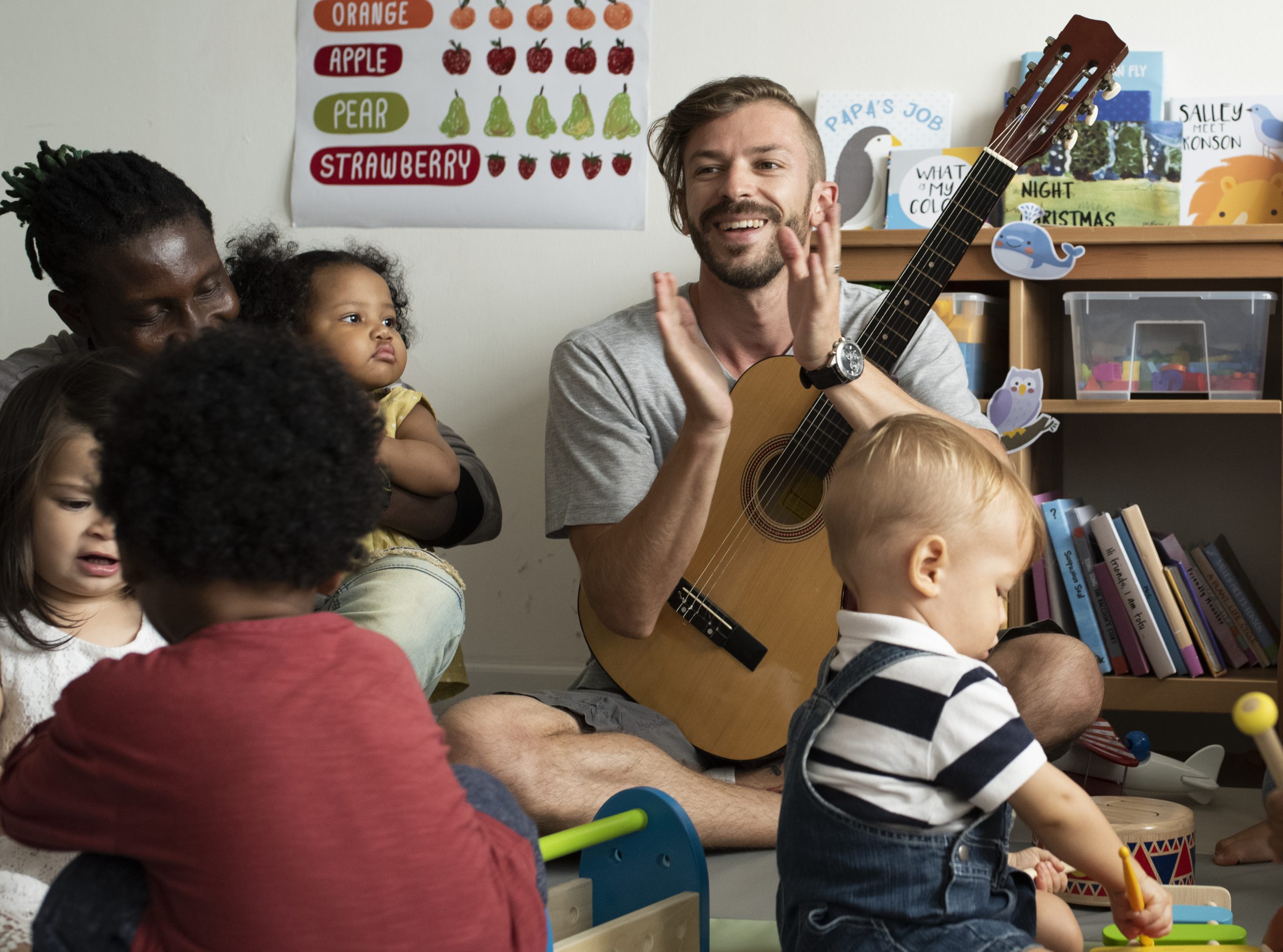
mix talked to Joachim Thys. Joachim is a saxophone teacher and teacher of ‘jazz/pop/rock’ ensembles.
He has a strong solid grounding with ethnic music and ‘world music’ and he likes the experience of taking his students exploring other cultures.
Where does your passion for world and ethnic music have its origin?
Joachim: At the age of 17, I started to take classical saxophone classes at the academy. As I wanted to learn to improvise at the time, I also started a folk and jazz course at muziekmozaiek. The music offered during this course was very broad. I was introduced with music from all over the world, from many different places and different cultures. An entire world opened up to me. During this course, I learned to see, feel and hear that there was more out there. With a few participants from this course, the orchestra “Transpiradansa!” under the leadership of Wouter Vandenabeele was also founded. With this band, we performed music sourced from just about everywhere. We went to South Africa and later, with a smaller line-up, to Senegal and China where we blended with local musicians. These were fascinating experiences through which we learned to know, feel and play other musical styles.
How important is the ability to learn from each other to you?
Joachim: The principle of learning from each other is something very special to me. An example of good practice can be found in the Ethno courses organised worldwide. During these courses, people teach and share music with each other on a cross-cultural basis.
The Folk Marathon organised somewhere in Europe each year around New Year is likewise built on this principle. Participants can indicate their intent to teach other participants about their music. Participating in these courses and events is a way to build a network with other musicians with the same mindset and attitude regarding the exchange of knowledge and skills.
Can you tell us more about your fascination with world and ethnic music?
Joachim: First of all, it’s the exoticism that triggers me. The strangeness, the unknown also makes it all a bit exciting. And this attitude of networking is inherent in the world and folk music scene. Furthermore, this mentality is socially very relevant in times when individualism and also nationalism are increasingly gaining ground. It is beautiful, and perhaps even paradoxical, that people who cherish and propagate their own cultural tradition are also able to engage with other cultures in the same way.
What is the pedagogical advantage of using world music in the classroom?
Joachim: For me, that lies primarily in a rhythmic component. Although you are working with music of different cultural origin, you often discover universal patterns in the rhythm and ‘the groove’ of this music.
In addition, you cannot ignore the fact that the deep roots of traditional music are almost present and vivid. I refer to music from the Roma, in which you experience that this music has been able to develop over a long period of time. That too is an antidote to the swiftness of the individualistic society of the West.
The emphasis in our individualistic culture is often on the short-term context. A collectivist culture such as that of the Roma, however, has tradition and a deep ‘soul’ in the music, which seems timeless. This timelessness, this sustainability, is also very noticeable in flamenco and the blues. To me, it is a very precious and essential element in the experience of music and culture.
Do you also point out these nuances to your students in your own classroom practice? Do you work with this?
Joachim: Not really. In fact, it is certainly not the case that music which is not so deeply rooted in tradition is less interesting to me, it is simply different.
When I bring a Roma song into my music combos, I try to let the students experience it without using too many words.
I do use this other kind of music on a regular basis, at times consciously to demonstrate or explain certain aspects of it, but generally because of emotional involvement.
What I like to do regularly is revealing the similarities between different genres:
For example, the question-and-answer idea in a Congolese song can also be found in work songs and blues. The rhythmic layering in Congolese soukous or Peruvian chicha has similarities with the funk music of James Brown, well known to us. In addition, the afrobeat from Nigeria is a direct descendant of James Brown’s music.
I also make frequent use of pentatonics, a recurring element in both Western and non-Western music. Whether you listen to Malian, Chinese, Irish or Scandinavian music or to American blues, hard rock or dance, you will discover this pentatonic base everywhere.
I regularly notice a fascination or astonishment among my students for the interconnectedness that they discover throughout the musical genres and musical cultures.
Now, World music is not a compulsory subject; sometimes I work with jazz standards or soul music. I simply look at the possibilities, strengths and needs of the group concerned.
Does cross-cultural learning in the school also foster greater comprehension of other cultures?
Joachim: I would like to prevent myself from romanticising this. What I certainly notice amongst my students is an increased interest in the foreign music that they have just become acquainted with. Students actively use YouTube and Spotify to continue searching for audio clips which relate to musicians or musical styles they got to know in class. From their interest, they definitely evolve and make new connections. Knowledge of and feeling acquainted with music from different cultures can, in my opinion, contribute to an open, keen and appreciative attitude, which may lead to a dialogue outside of music as well; it can lead to a Community in which people with diverse backgrounds can feel more connected to each other.
Can you give any advice on working with students with different cultural roots in a class?
Joachim:
- Don’t take the traditional Western instrumentation as your only base. Make your offer more varied. By offering Baglama, Darbuka or Kora classes, you will attract a much more diverse audience and you will more easily explore other worlds. And on the other hand, I like to let students discover that they can play many other things with the Western instrumentation, such as a Chinese song that is normally played on an ‘erhu’.
- Embrace what is common. Work on common aspects.
- Pentatonics and rhythmic patterns are fun to work with.
- Bring cross-cultural musical guests to your class.
- Listen, play and share; there is so much to discover!





